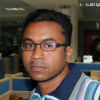Rising Medical Expenses: The poor slide deeper into poverty
Seventeen-year-old Mehedi Hasan was diagnosed with skin cancer at a Natore hospital in December 2017 and was referred to the National Institute of Cancer Research and Hospital.
After his mother brought him to the institute in the capital's Mohakhali, doctors performed several tests and asked them to go home and wait until they hear from the hospital.
A few weeks later, his mother took Mehedi to Dhaka Medical College Hospital where he stayed for seven months and operated upon five times.
Meanwhile, paying for medication, travels and food, his parents' savings depleted. They also incurred debts, his mother Monju Ara said as she attended to her son at the DMCH last week.
He was released from the hospital last year, but had to be brought back regularly for chemotherapy. He now has to stay half of each month at the hospital.
“We have to spend at least Tk 25,000 every time we come to Dhaka for his chemotherapy,” the grieving mother told The Daily Star, adding that the family has spent over Tk 4 lakh for his treatment so far.
“Mehedi's father is a labourer and we have nothing but our village home and a tonne of debt,” she said.
Mehedi's is a classic case of how the poor get poorer due to high out-of-pocket (OOP) health expenditures.
According to 2015 study by the health ministry, OOP expenditure is as high as 67 percent of the total healthcare cost in Bangladesh. It is the highest in South and Southeast Asia. The global average is 32 percent.
A study by the International Centre for Diarrhoeal Disease Research, Bangladesh found that OOP expenditures push four to five million people into poverty every year in the country.
HOW DOES THE COST RISE?
Habibullah Talukder Ruskin, associate professor at the National Institute of Cancer Research and Hospital (NICRH), said Mehedi's treatment would not have cost so much if he was treated immediately after being diagnosed with cancer at his home town. But there is no cancer hospital in Rajshahi division.
“They had to spend for travelling, food, diagnosis and medication. All of these made the treatment really expensive,” he said.
Many of the government medical colleges with cancer departments don't have the equipment for diagnosis. Therefore, patients need to go elsewhere, often to private facilities, for tests and spend.
Ideally, cancer medicine should be provided by the government for free, but that's not the reality. Only the NICRH provides part of the drugs for free. Public medical colleges with cancer departments also don't provide free drugs. Therefore, patients have to pay for many of the cancer medication, he said.
Economist and public health analyst Hossain Zillur Rahman said as public health facilities are not fully equipped with the logistics and human resource and are often riddled with irregularities, healthcare service is largely provided by the country's mostly unregulated private sector.
Over 63 percent households seek healthcare services from private sector, according to a 2018 study by the Transparency International Bangladesh.
Zillur said drugs cost comprises of a large part of the total healthcare cost. But drugs price is almost beyond government control.
“There is a nexus between a section of pharmaceutical companies and the healthcare providers,” he said.
Unnecessary tests are often advised due to collaboration between diagnostic centres and a section of physicians.
The TIB research on private healthcare says commission-based marketing system has developed in the private healthcare sector. The beneficiaries of the system include government and private doctors, other health workers, medicine sellers and brokers. The amount of commission varies from 25 to 50 percent of the cost of the service.
“Commission is even given [to the brokers] for sending cases for C section. The amount ranges from Tk 500 to Tk 5,000,” it says.
Zillur said a proper referral system is absent in rural and urban areas. Therefore, patients oftentimes remain confused about where to go.
Also, there must be a standard cost fixed by the government for critical treatment, he said.
According to icddr,b, non-communicable diseases (NCDs), including heart, lung or kidney conditions, diabetes and cancer, account for an estimated 59 percent of the total deaths (886,000) each year in Bangladesh.
Ruskin of the NICRH said as NCDs are the major threats, the government should establish specialised hospitals in all the divisional cities.
Early screening means the treatment is easy and less expensive, he said.
Prof Sharmeen Yasmeen, chairperson of Public Health Foundation of Bangladesh, said if the public hospitals in the union and upazila levels were functional with adequate health personnel and logistics, much of the problems faced today would have been solved.


 For all latest news, follow The Daily Star's Google News channel.
For all latest news, follow The Daily Star's Google News channel. 



Comments